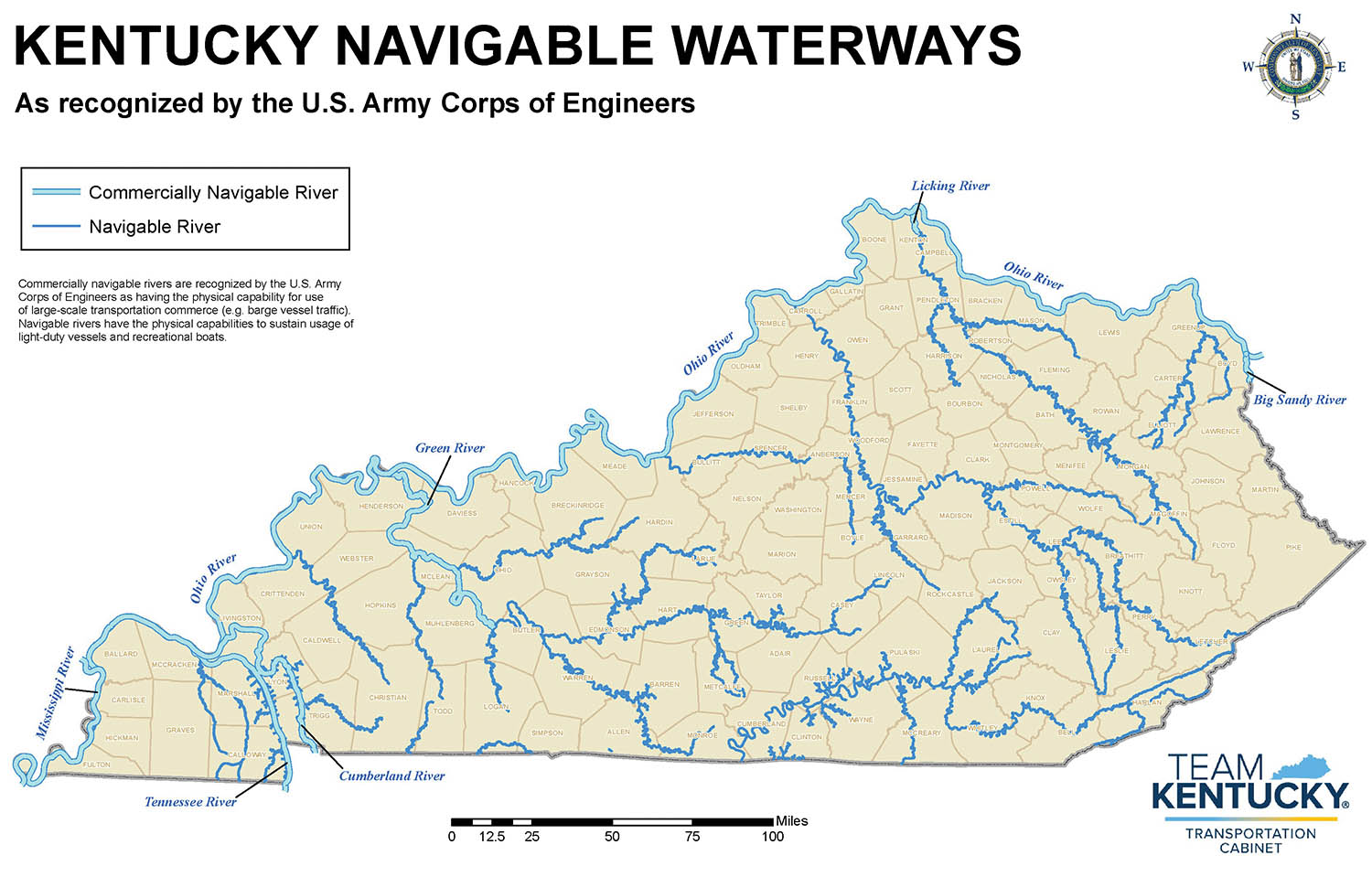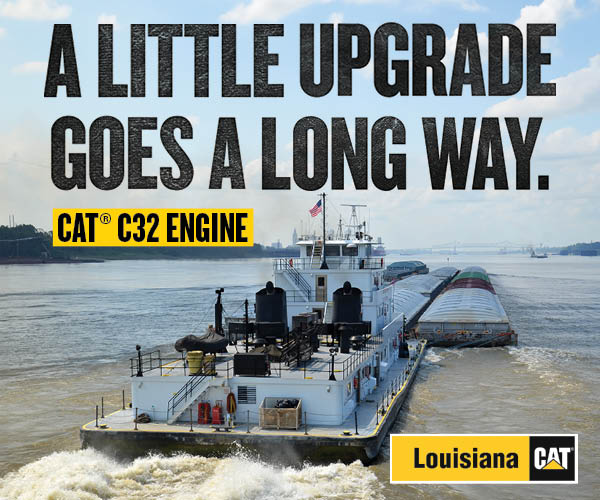Kentucky transportation officials are working with the U.S. Maritime Administration (MarAd) to designate additional Kentucky rivers as marine highways.
On June 11, the Kentucky Transportation Cabinet received notice that the 7 navigable miles of the Licking River, a tributary of the Ohio River, had been added to the Ohio River’s M-70 marine highway designation, said Jeremy Edgeworth, the agency’s freight, rail and waterways coordinator.
“Being on a designated route helps open up access to grants to help move freight,” he said.
By the end of the year, transportation officials hope to apply for marine highway designations on the Cumberland, Big Sandy and Green rivers, said Jake Rice, project manager. Kentucky is co-sponsoring the Big Sandy River application with the West Virginia Department of Transportation and the Cumberland River project with the Tennessee Department of Transportation, since the rivers also travel through those states.
Edgeworth said the program allows and encourages collaboration between states to benefit them all.
“It’s not an adversarial or competitive thing,” he said. “We’re all wanting to work together.”
To be eligible for grants through MarAd’s United States Marine Highways Program, projects must move freight on a designated marine highway route. The program is among few that offer government-funded grants not only to public entities but also to private entities that have a letter of support from a sponsor, Edgeworth said. Additionally, while some grant programs may focus on projects at larger, coastal ports, the Marine Highways Grant Program also allows development at smaller facilities on inland routes.
Kentucky officials see the marine highway route designations as a potential economic recruitment tool. Kentucky also became a co-sponsor of the marine highway project on the Ohio River, which was designated as a marine highway route on December 8, 2023. Edgeworth said the co-sponsorship helps make it easier for any Kentucky grant applicants to receive letters of support from sponsors.
While Ohio had previously been the primary sponsor for the Ohio River project, departments of transportation from Illinois, Missouri and West Virginia, along with the Ports of Indiana and Port of Pittsburgh Commission, joined as co-sponsors for that project around the same time Kentucky did.
Edgeworth noted that MarAd had $4.8 million in grant proceeds eligible for awarding through the Marine Highway Program through July 12, but it has offered as much as $38 million in funding in 2022.
Preparing to submit applications for the new routes includes gathering letters of support from cities, counties, legislators, area development districts and members of the navigation industry, Edgeworth said.
“This shows there is a broad level of support for these designations,” he said.
The Marine Highway Grants Program previously funded projects at the Paducah-McCracken County Riverport Authority and, with the sponsorship of the Ohio-Kentucky-Indiana Regional Council of Governments, projects involving two Nucor Steel facilities in Kentucky.
“Those have been hugely successful projects,” Edgeworth said.
Rice said Kentucky officials hope to incentivize development on the state’s smaller rivers, including the 109 commercially navigable miles of the Green River.
“Kentucky is blessed to have so much water connection compared to other states,” Edgeworth said. “We just need to find ways to take more advantage of that.”
Moving freight via the waterways also makes sense, he said, as it is an environmentally friendly practice, does not add congestion to highways and doesn’t require state funds for maintenance.




